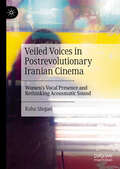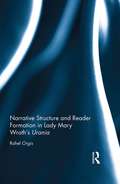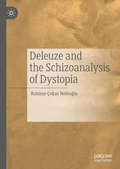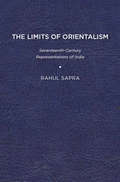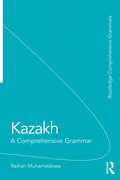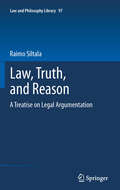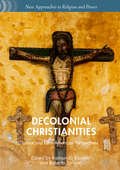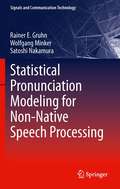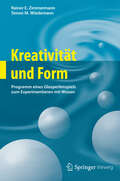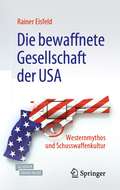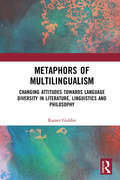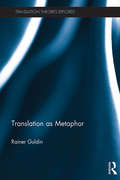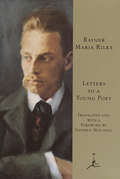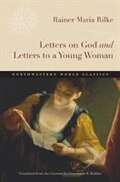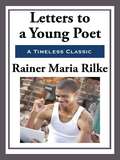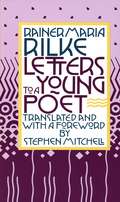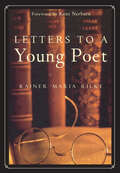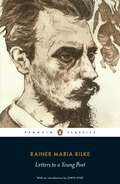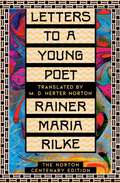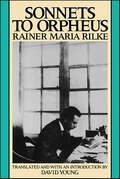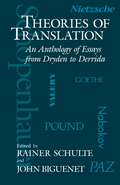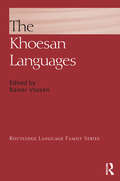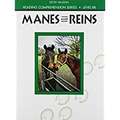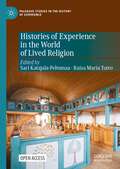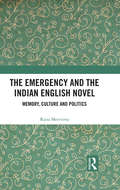- Table View
- List View
Veiled Voices in Postrevolutionary Iranian Cinema: Women’s Vocal Presence and Rethinking Acousmatic Sound
by Raha ShojaeiThis book examines the vocal presence of women in postrevolutionary Iranian cinema. The research explores the concept of the veiled voice, which conceals the bodily aspects of the voice and suppresses its discursive elements. Studying the "veiling" of women&’s voices in New Iranian Cinema, how they relate to authoritative voices, and their limitations in cinematic spaces, the book addresses the detachment of women&’s voices from their bodies in some films. The book argues that this detachment is often used as a feminist strategy to bypass constraints on female portrayal on camera. The book dissects how these voices are often marginalized within the cinematic space, either structurally, narratively, or due to patriarchal adherence. It also discusses the concept of the acousmatic voice, particularly in the context of Iranian cinema, where the female voice-off is used as a spatial veil, contributing to the marginalization of women. Although Michael Chion's concept of the acousmêtre is based on classic Hollywood cinema, this book shows that the mere presence of an off-screen voice does not ensure a predictable impact in the filmic world. In New Iranian Cinema, influenced by factors like modesty rules, the off-screen voice untethered to a body can serve as a presentational strategy rather than just a cinematic narrational device. The book also investigates the unveiling of the female voice as a subject of aesthetic admiration and desire within the cinematic realm, navigating censorship through religious and cinematic elements and explores how cinematic spaces manipulate the presence and embodiment of the unveiled voice to avoid revealing its true source. The book is also informed by the author's experience as the first woman sound designer working in the Iranian film industry.
Narrative Structure and Reader Formation in Lady Mary Wroth's Urania
by Rahel OrgisNarrative Structure and Reader Formation in Lady Mary Wroth’s Urania offers the first systematic formal and thematic analysis of Wroth’s Urania in its historical context and explores the structural means by which Wroth fashions her readership. The book thus has a dual focus, at once on narrative art and reader formation. It makes two original claims, the first being that the Urania is not the unorganized accumulation of stories critics have tended to present it as, but a work of sophisticated narrative structures i.e. a complex text in a positive sense. These structures are revealed by means of a circumspect narratological analysis of the formal and thematic patterns that organise the Urania. Such an analysis furthers our understanding of the reading strategies that Wroth encourages. The second claim is, then, that through the careful structuring of her text Wroth seeks to create her own ideal readership. More precisely, the formal and thematic structures of the Urania engage with readers’ expectations, inviting them to reflect on prominent thematic issues and respond to the text as what early modern prefaces term "good" readers. Combining narratological methods with a generic perspective and taking into account the work of book historians on early modern reading practices, this monograph provides a new approach to the Urania, supplementing the typically gender- or (auto)biographically-oriented interpretations of the romance. Moreover, it contributes to the study of early modern (prose) narrative and romance and exemplifies how historically contextualised narratological analysis may yield new insights and profit research on reading strategies.
Deleuze and the Schizoanalysis of Dystopia
by Rahime Çokay NebioğluThis book offers an insightful history of dystopian literature, integrating it within the conceptual schemas of Deleuze and Guattari. Unlike earlier examples of dystopia which depict representations of a possible future that is remarkably worse than present society, contemporary dystopia often tends to portray an almost allegorical re-presentation of present society. Tracing dystopia’s shift from transcendence towards immanence with the rise of late neoliberal capitalism and control-societies, Çokay Nebioğlu skilfully constructs a new taxonomy of dystopian fiction to address this changing dynamic. Accompanied by a subtle exploration of earlier and later examples of the genre by George Orwell, Aldous Huxley, Suzanne Collins, Veronica Roth, William Gibson, Max Barry, Dave Eggers, Cindy Pon, and Tahsin Yücel along with rich and nuanced analysis of China Mieville’s Perdido Street Station and Margaret Atwood’s MaddAddam trilogy, the book seeks not only to track the transformation of dystopia in light of worldwide cultural, political and economic transformation, but also to conduct a schizoanalytic reading of dystopia, thus opening up an exciting field of enquiry for Deleuzian scholars.
The Limits of Orientalism: Seventeenth-Century Representations of India
by Rahul SapraThe Limits of Orientalism: Seventeenth-Century Representations of India challenges the recent postcolonial readings of European, predominantly English, representations of India in the seventeenth century. Following Edward Said’s discourse of “Orientalism,” most postcolonial analyses of the seventeenth-century representations of India argue that the natives are represented as barbaric or exotic “others,” imagining these representations as products of colonial ideology. Such approaches tend to offer a homogeneous idea of the “native” and usually equate it with the term “Indian.” Sapra, however, argues that instead of representing all natives as barbaric “others,” the English drew parallels, especially between themselves and the Mughal aristocracy, associating with them as partners in trade and potential allies in war. While the Muslims are from the outset largely portrayed as highly civilized and cultured, early European writers tended to be more conflicted with Hindus, their first highly negative views undergoing a transformation that brings into question any straightforward Orientalist reading of the texts and anticipates the complexity of later representations of the indigenous peoples of the sub-continent. Sapra’s theoretical and methodological approach is influenced by such writers as Aijaz Ahmad and Denis Porter, who have highlighted powerful alternatives to Said’s discourse of “Orientalism.” Sapra historicizes European representations of the indigenous to draw attention to the contrasting approaches of the Portuguese, the Dutch and the English in relation to seventeenth-century India, effectively undermining comfortable notions of a homogenous “West.” Unlike the Portuguese, for whom the idea of a dynasty and the conversion of heathens went hand in hand with the idea of trade, for the Dutch and the English the primary consideration was commercial. In keeping with the commercial approach of the English East India Company, most English travelers, instead of representing the Muslims as barbaric “others,” highlight the compatibility between the two cultures and consistently praise the Mughal empire for its religious tolerance. In the representations of the Hindus, Sapra demonstrates that most writers, even while denigrating the Hindu religion, appreciate the civilized society of the Hindus. Moreover, in the representations of sati or widow-burning, a distinction needs to be made between the patriarchal and the Orientalist points of views, which are at variance with each other. The tension between the patriarchal and the Orientalist positions challenges Gayatri Chakravorty Spivak’s analysis of sati in “Can the Subaltern Speak?” which has become the standard model for most postcolonial appraisals of European representations of sati. The book highlights the lacuna in postcolonial readings by providing access to selections of commonly unavailable early-modern writings by Thomas Roe, Edward Terry, Henry Lord, Thomas Coryate, Alexander Hamilton and other the records of the East India Company, which makes the book vital for students of theory, European and South-Asian history, and Renaissance literatures. Published by University of Delaware Press. Distributed worldwide by Rutgers University Press.
Kazakh: A Comprehensive Grammar (Turcologica Ser. #102)
by Raikhangul MukhamedovaKazakh: A Comprehensive Grammar is the first thorough analysis of Kazakh to be published in English. The volume is systematically organized to enable users to find information quickly and easily, and provides a thorough understanding of Kazakh grammar, with special emphasis given to syntax. Features of this book include: descriptions of phonology, morphology and syntax; examples from contemporary usage; tables summarizing discussions, for reference; a bibliography of works relating to Kazakh. Kazakh: A Comprehensive Grammar reflects the richness of the language, focusing on spoken and written varieties in post-Soviet Kazakhstan. It is an essential purchase for all linguists and scholars interested in Kazakh or in Turkic languages as well as advanced learners of Kazakh.
Law, Truth, and Reason
by Raimo SiltalaThis book is an innovative contribution to analytical jurisprudence. It is mainly based on the distinct premises of linguistic philosophy and Carnapian semantics, but also addresses the issues of institutional philosophy, social pragmatism, and legal principles as envisioned by Dworkin, among others. Wróblewski´s three ideologies (bound/free/legal and rational) and Makkonen´s three situations (isomorphic/semantically vague/normative gap) of judicial decision-making are further developed by means of 10 frames of legal analysis as discerned by the author. With the philosophical theories of truth serving as a reference, the frames of legal analysis include the isomorphic theory of law (Wittgenstein, Makkonen), the coherence theory of law (Alexy, Peczenik, Dworkin), the new rhetoric and legal argumentation theory (Perelman, Aarnio), social consequentialism (Posner), natural law theory (Fuller, Finnis), and the sequential model of legal reasoning by Neil MacCormick and the Bielefelder Kreis. At the end, some key issues of legal metaphysics are addressed, like the notion of legal systematics and the future potential of the analytical approach in jurisprudence.
Decolonial Christianities: Latinx and Latin American Perspectives (New Approaches to Religion and Power)
by Raimundo Barreto Roberto SirventWhat does it mean to theorize Christianity in light of the decolonial turn? This volume invites distinguished Latinx and Latin American scholars to a conversation that engages the rich theoretical contributions of the decolonial turn, while relocating Indigenous, Afro-Latin American, Latinx, and other often marginalized practices and hermeneutical perspectives to the center-stage of religious discourse in the Americas. Keeping in mind that all religions—Christianity included—are cultured, and avoiding the abstract references to Christianity common to the modern Eurocentric hegemonic project, the contributors favor embodied religious practices that emerge in concrete contexts and communities. Featuring essays from scholars such as Sylvia Marcos, Enrique Dussel, and Luis Rivera-Pagán, this volume represents a major step to bring Christian theology into the conversation with decolonial theory.
Statistical Pronunciation Modeling for Non-Native Speech Processing
by Wolfgang Minker Rainer E. Gruhn Satoshi NakamuraIn this work, the authors present a fully statistical approach to model non--native speakers' pronunciation. Second-language speakers pronounce words in multiple different ways compared to the native speakers. Those deviations, may it be phoneme substitutions, deletions or insertions, can be modelled automatically with the new method presented here. The methods is based on a discrete hidden Markov model as a word pronunciation model, initialized on a standard pronunciation dictionary. The implementation and functionality of the methodology has been proven and verified with a test set of non-native English in the regarding accent. The book is written for researchers with a professional interest in phonetics and automatic speech and speaker recognition.
Kreativität und Form
by Simon M. Wiedemann Rainer E. ZimmermannAusgehend von der Idee des Glasperlenspiels, die Hermann Hesse in seinem gleichnamigen Roman entwirft, haben die Autoren in diesem Band die Möglichkeiten und Grenzen eines solchen Spiels im Umgang mit Wissen ausgelotet. Sie zeigen neue Methoden für das Wissensmanagement auf und verbinden dafür Erkenntnisse verschiedener Wissenschaftsgebiete wie Logik, System- und Erkenntnistheorie sowie Semiotik, Kognition und Kommunikation. Das begleitende Computerprogramm unterstützt Leser beim Experimentieren mit Wissen.
Die bewaffnete Gesellschaft der USA: Westernmythos und Schusswaffenkultur
by Rainer EisfeldDas Buch thematisiert den aus der Besiedlungs-, vor allem der Cowboy-Ära hergeleiteten Westernmythos in den USA, der über Generationen hinweg von den populärsten Medien jeder Epoche wiederholt wird. Der bewaffneten Gesellschaft, die das 19. Jahrhundert den Vereinigten Staaten hinterlassen hat und deren (vor allem weiße) Mitglieder sich in beispielloser Weise immer weiter aufrüsten, liefert dieser Mythos fortdauernde Identifikationssymbole und eine Deutung ihrer Ursprünge als Fortschritt durch Anwendung von Gewalt. Seine Prägekraft trägt zur Verhärtung einer Schusswaffenkultur bei, in der sich trügerisches Sicherheitsgefühl und ständige Verunsicherung mischen. Der Mythos befeuert die Sehnsucht nach den „einfachen“ Lösungen einer verklärten Vergangenheit, die Millionen amerikanischer Bürger anfällig macht für autoritäre Demagogie à la Tea Party und Donald Trump. Im Mittelpunkt des Mythos steht die Legende vom Revolverkämpfer als Lichtfigur, die das Buch am Beispiel ihres Prototyps erörtert.
Metaphors of Multilingualism: Changing Attitudes towards Language Diversity in Literature, Linguistics and Philosophy
by Rainer GuldinMetaphors of Multilingualism explores changing attitudes towards multilingualism by focusing on shifts both in the choice and in the use of metaphors. Rainer Guldin uses linguistics, philosophy, literature, literary theory and related disciplines to trace the radical redefinition of multilingualism that has taken place over the last decades. This overall change constitutes a paradigmatic shift. However, despite the emergence of the new paradigm, the traditional monolingual point of view is still significantly influencing present-day attitudes towards multilingualism. Consequently, the emergent paradigm has to be studied in close connection with its predecessor. This book is the first extensive attempt to provide a critical overview of the key metaphors that organize current perceptions of multilingualism. Instead of an exhaustive list of possible metaphors of multilingualism, the emphasis is on three closely interrelated and overlapping clusters that play a central role in both paradigms: organic metaphors of the body, kinship and gender metaphors, as well as spatial metaphors. The examples are taken from different languages, among them French, German, Chinese, Japanese, Spanish and Brazilian Portuguese. This is ground-breaking reading for scholars and researchers in the fields of linguistics, literature, philosophy, media studies, anthropology, history and cultural studies.
Translation as Metaphor (Translation Theories Explored)
by Rainer GuldinIn today’s ever-changing climate of disintegration and recombination, translation has become one of the essential metaphors, if not the metaphor, of our globalized world. Translation and Metaphor is an attempt to draw a comprehensive map of these new overlapping theoretical territories and the many cross-disciplinary movements they imply. In five chapters, this book examines: · The main metaphor theories developed in the West. · The way the notion of metaphor relates to the concept of translation. · Different theoretical perspectives on metaphors of translation in translation studies. · The main metaphors developed to describe translation in the West and in the East. · Spatial metaphors within translation studies, cultural studies and postcolonial theory. · The use of the metaphor of translation across psychoanalysis, anthropology and ethnography, postcolonial theory, history and literature, sociology, media and communication theory, and medicine and genetics. Comprehensive analysis of key metaphor theories, revealing examples from a wide range of sources and a look towards future directions make this is a must-have book for students, researchers and translators working in the areas of translation and translation theory.
Letters To a Young Poet
by Rainer Maria RilkeRilke&’s Letters to a Young Poet are arguably the most famous and beloved letters of the twentieth century. Written when the poet was himself still a young man, with most of his greatest work before him, they were addressed to a student who had sent Rilke some of his own writing, asking for advice on becoming a writer. The two never met, but over a period of several years Rilke wrote him these ten letters, which have been cherished by hundreds of thousands of readers for what Stephen Mitchell calls in his Foreword the "vibrant and deeply felt experience of life" that informs them. Eloquent and personal, Rilke&’s meditations on the creative process, the nature of love, the wisdom of children, and the importance of solitude offer a wealth of spiritual and practical guidance for anyone. At the same time, this collection, in Stephen Mitchell&’s definitive translation, reveals the thoughts and feelings of one of the greatest poets and most distinctive sensibilities of the twentieth century.
Letters on God and Letters to a Young Woman (Northwestern World Classics Series)
by Rainer Maria RilkeRainer Maria Rilke (1875–1926) was an avid letter writer, and more than seven thousand of his letters have survived. The best-known collection today is Rilke’s Letters to a Young Poet, first published in 1929. Two other letter collections appeared around the same time and gained high acclaim among readers yet are virtually unknown today. They are Letters to a Young Woman (1930) and Letters on God (1933). With this volume, Annemarie S. Kidder makes available to an English-speaking audience two of the earliest collections of Rilke letters published after his death. <P><P>The thematic collection On God― here published in English for the first time―contains two letters by Rilke, the first an actual letter written during World War I, in 1915 in Munich, the second a fictional one composed after the war, in 1922 at Muzot, in Switzerland. In these letters, Rilke builds on the mystical view of God conceived of in The Book of Hours, but he moves beyond it, demonstrating a unique vision of God and Christ, the church and religious experience, friendship and death. The collection Letters to a Young Woman comprises nine of Rilke’s letters, written to a young admirer, Lisa Heise, over the course of five years, from 1919 to 1924. Though Rilke and Heise never met, Rilke emerges in these letters as the compassionate listener and patient teacher who with level-headed sensitivity affirms and guides the movements of another person’s soul.
Letters to a Young Poet
by Rainer Maria RilkeThese ten letters, written by one of the greatest poets of the twentieth century, offer deep and sincere advice to the young poet. They touch on all aspects of life and are valuable to anyone wishing to be a poet and to those who are not. Written with power, style, and conviction these letters will guide and inspire anyone who reads them. Wilder Publications is a green publisher. All of our books are printed to order. This reduces waste and helps us keep prices low while greatly reducing our impact on the environment.
Letters to a Young Poet
by Rainer Maria Rilke Stephen MitchellLetters written over a period of several years on the vocation of writing by a poet whose greatest work was still to come.From the Paperback edition.
Letters to a Young Poet
by Rainer Maria RilkeThese have been called the most famous and beloved letters of the past century. Rainer Maria Rilke himself said that much of his creative expression went into his correspondence, and here he touches upon a wide range of subjects that will interest writers, artists,and thinkers. This luminous translation of Rainer Maria Rilke's classic offers brilliant inspiration to all people who seek to know and express their inner truth. Letters to a Young Poet is a classic that should be required reading for anyone who dreams of expressing themselves creatively.
Letters to a Young Poet (Thrift Editions Ser.)
by Rainer Maria RilkeAt the start of the twentieth century, Rainer Maria Rilke wrote a series of letters to a young officer cadet, advising him on writing, love, sex, suffering and the nature of advice itself; these profound and lyrical letters have since become hugely influential for writers and artists of all kinds. This book also contains the 'Letter from a Young Worker', a striking polemic against Christianity written in letter-form, near the end of Rilke's life. In Lewis Hyde's introduction, he explores the context in which these letters were written and how the author embraced his isolation as a creative force. Charlie Louth's afterword discusses the similarities and contrasts of the two works, and Rilke's religious and sexual wordplay. This edition also contains a chronology, notes, and suggested further reading.
Letters to a Young Poet: The Norton Centenary Edition
by Rainer Maria RilkeA gorgeous edition of one of the most beloved classics of the twentieth century, published in celebration of W. W. Norton’s 100th anniversary. This slim volume of letters from the poet and mystic, Rainer Maria Rilke, to a nineteen-year-old cadet and aspiring poet named Franz Xaver Kappus, has touched millions of readers since it was first published in English in 1934. The translator, Mary Dows Herter Norton—a polymath extraordinaire with expertise in music, literature, and science, and who, along with her husband, William Warder Norton, founded the company that bears his name—played a crucial role in elevating Rilke’s reputation in the English-speaking world. This Norton Centenary Edition commemorates Norton, known as “Polly” to friends and colleagues, and the 100th anniversary of the publishing company she co-founded. An admiring foreword by Damion Searls—himself a recent translator of Rilke’s Letters—celebrates Polly’s stylistic achievement, and an afterword by Norton’s President, Julia A. Reidhead, honors her commitment to maintaining W. W. Norton & Company’s independence. This handsome new edition of a beloved classic brings Rilke’s enduring wisdom about life, love, and art to a new generation, in the translation that first introduced him to the English-speaking world.
Sonnets to Orpheus (Wesleyan Poetry in Translation)
by Rainer Maria RilkeSonnets to Orpheus is Rainer Maria Rilke's first and only sonnet sequence. It is an undisputed masterpiece by one of the greatest modern poets, translated here by a master of translation, David Young.Rilke revived and transformed the traditional sonnet sequence in the Sonnets. Instead of centering on love for a particular person, as has many other sonneteers, he wrote an extended love poem to the world, celebrating such diverse things as mirrors, dogs, fruit, breathing, and childhood. Many of the sonnets are addressed to two recurrent figures: the god Orpheus (prototype of the poet) and a young dancer, whose death is treated elegiacally.These ecstatic and meditative lyric poems are a kind of manual on how to approach the world – how to understand and love it. David Young's is the first most sensitive of the translations of this work, superior to other translations in sound and sense. He captures Rilke's simple, concrete, and colloquial language, writing with a precision close to the original.
Theories of Translation: An Anthology of Essays from Dryden to Derrida
by Rainer Schulte and John BiguenetSpanning the centuries, from the seventeenth to the twentieth, and ranging across cultures, from England to Mexico, this collection gathers together important statements on the function and feasibility of literary translation. The essays provide an overview of the historical evolution in thinking about translation and offer strong individual opinions by prominent contemporary theorists. Most of the twenty-one pieces appear in translation, some here in English for the first time and many difficult to find elsewhere. Selections include writings by Scheiermacher, Nietzsche, Ortega, Benjamin, Pound, Jakobson, Paz, Riffaterre, Derrida, and others. A fine companion to The Craft of Translation, this volume will be a valuable resource for all those who translate, those who teach translation theory and practice, and those interested in questions of language philosophy and literary theory.
The Khoesan Languages (Routledge Language Family Series)
by Rainer VossenThe Routledge Language Family series is aimed at undergraduates and postgraduates of linguistics and language, and those with an interest in historical linguistics, linguistic anthropology and language development. According to a widely accepted hypothesis, the Khoesan languages represent the smallest of the four language phyla in Africa, geographically distributed mainly in Botswana and Namibia. Today, only 30 or so Khoesan languages may still exist, with about 300,000 native speakers. In other words, most Khoesan languages were already extinct before a sound scholarly interest in them could begin to develop. Drawing together a distinguished group of international experts, with much of the material taken from data collected by the authors’ own field work, this volume presents descriptive, typological, historical-comparative and sociolinguistic material on Khoesan. The Khoesan Languages contains eight sections: an introduction, an overview of genetic relationships, a typological survey and profile of Khoesan, four chapters covering core linguistic areas of Khoesan phonetics and phonology, tonology, morphology and syntax, and a final chapter tackling major issues in Khoesan sociolinguistics, as well as discussions of language contact. Comprehensive and scholarly, yet also lucid in its coverage of a broad range of languages, dialects and sub-groups, this unprecedented and original work represents the current state of Khoesan linguistics.
Manes and Reins
by Raintree Steck-Vaughn StaffA second grade workbook to aid the students as they learn how to read and answer comprehension questions.
Histories of Experience in the World of Lived Religion (Palgrave Studies in the History of Experience)
by Raisa Maria Toivo Sari Katajala-Peltomaa'At a historic moment, when religion shows all its social and political strength in various post-modern societies around our globe, this fascinating collection of studies from the Middle Ages to twentieth-century Europe demonstrates all the richness and innovative force of investigating individual and shared experiences when questioning the cultural, political and social place of religion in society. It also makes known in English the work of a series of Finnish historians elaborating together a pioneering vision of the notion of experience in the discipline of history.'- Piroska Nagy, Université du Québec à Montréal, Canada This open access book offers a theoretical introduction to the history of experience on three conceptual levels: everyday experience, experience as process, and experience as structure. Chapters apply 'experience' to empirical case studies, exploring how people have made and shared their religion through experience in history. This book understands experience as a simultaneously socially constructed and intimately personal process that connects individuals to communities and past to future, thereby forming structures that create and direct societies. It represents the crossroads of a new field of the history of experience, and an established tradition of the history of lived religion. Chapters offer a longue durée view from the fourteenth-century heretics, via experiences of miracle, madness, sickness, suffering, prayer, conversion and death, to the religious artisanship of soldiers in the Second World War frontlines. It concentrates on Northern Europe, but includes materials from Italy, France and United Kingdom.
The Emergency and the Indian English Novel: Memory, Culture and Politics
by Raita MerivirtaThis book examines the cultural trauma of the Indian Emergency through a reading of five seminal novels. It discusses the Emergency as an event that prompted the writing of several notable novels attempting to preserve the silenced and fading memory of its human rights violations and suspension of democracy. The author reads works by Salman Rushdie, Shashi Tharoor, Nayantara Sahgal and Rohinton Mistry in conjunction with government white papers, political speeches, memoirs, biographies and history. The book explores the betrayal of the Nehruvian idea of India and democracy by Indira Gandhi and analyses the political and cultural amnesia among the general populace in the decades following the Emergency. At a time when debates around freedom of speech and expression have become critical to literary and political discourses, this book will be of great interest to scholars and researchers of English literature, cultural studies, postcolonial studies, media studies, political studies, sociology, history and for general readers as well.
